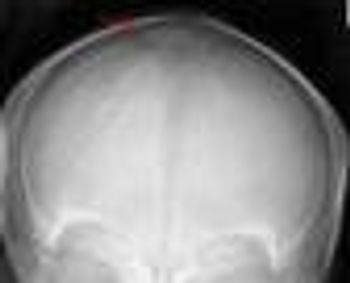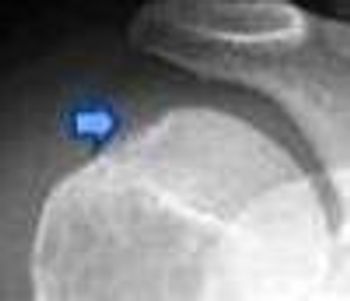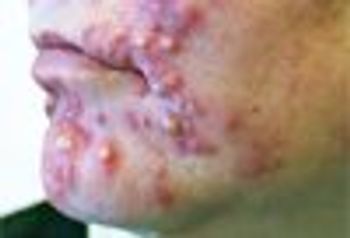
Results of a survey from the National Center for Health Statistics show that the median age at which children with special health care needs and ASD are identified is 5 years.

Results of a survey from the National Center for Health Statistics show that the median age at which children with special health care needs and ASD are identified is 5 years.

The increase in spending on children's health care is outpacing that of any other age group.

Parents of children with trisomy 13 and trisomy 18 who participate in support groups view their children's situation more positively than do medical professionals.

The author of this letter commends Michael Burke, MD, for his commentary on the article "Pediatric ED physicians can predict likelihood of intussusception," published in the May 2012 Journal Club in Contemporary Pediatrics.

One manufacturer of a patented oxycodone is now conducting a clinical trial that will evaluate the long-term safety of a daily 2-dose, controlled release formulation of the drug in children aged 6 to 17 years.

Now legislation will enable FDA to provide marketing incentives for the development of new treatments for rare pediatric diseases, including childhood cancer and sickle cell anemia.

Even in the pre-Prevnar, pre-conjugated Hib vaccine era, urinary tract infection was the most common bacterial infection found in infants who presented with fever without localizing clinical findings.

Computed tomography to evaluate pediatric minor head trauma has risen sharply in the last decade, causing concern about long-term effects of ionizing radiation and the associated risk of cancer.

According to a Centers for Disease Control and Prevention report, 2012 might be a record year for pertussis, with the highest number of cases reported since the 1970s.

Gestational age independently predicts academic achievement, even among full-term infants (born at 37 to 41 weeks).

The mother of a 4-year-old boy schedules an urgent visit in your office this afternoon for evaluation of a birthmark.

We live in a time of such potential for vaccine development that it's difficult to know where to put resources.

Mind-enhancement medications usually enhance everyone who uses them, not just those experiencing the most problems.

A retrospective review of children evaluated for appendicitis in emergency departments between 2005 and 2009 found that the use of ultrasound has risen whereas the use of computed tomography has decreased.

An 11-year-old boy with a 1-week history of progressive left facial pain comes to see you.

A study found that children with single-suture craniosynostosis had consistently lower mean neurodevelopmental scores than did controls.

The number of children admitted to US pediatric hospitals for physical abuse has increased over the past 10 years despite falling admission rates for all-cause injuries in children aged younger than 6 years for the same period.

A survey of 509 parents of children brought to the emergency department of a large, urban children's hospital suggests that the answer to this question is yes.

Fathers' interactions with their infants in the first months of life appear to influence children's behavior by the time they reach their first birthdays, British researchers have found.

AAP recommendations for diagnosing and managing a first urinary tract infection in children aged 2 to 24 months were updated in 2011.

It seems the best way to conquer egg allergy in children is with eggs. Find out how researchers in a clinical trial showed how to rid most children of the sensitivity and achieved a sustained clinical effect.

Wormian bones (anterior fontanellar bones) are extra islands of bone within the calvarial sutures of the skull.

Finally, help exists for making electronic health records (EHRs) in pediatric practice more useful and user friendly. Find out what tips you may want to incorporate into your practice. More >>

Is it possible that a synthetic compound known as serum di(2-ethylhexyl) phthalate (DEHP) is contributing to the obesity epidemic among our nation’s children? Find out what the results of 1 study say. More >>

A Hill-Sachs deformity is a compression injury to the posterolateral aspect of the humeral head created by the glenoid rim during dislocation.

More than a third of children taking dietary supplements failed to meet intake recommendations for calcium and vitamin D, a new study reports. Supplementation also raised the likelihood of excess intake of other micronutrients. Which nutrients were above recommended dietary levels? More >>

Of all the neonatal morbidities that commonly plague moderately preterm-born babies, only hypoglycemia is associated with increased risk of developmental delays by the time the children reach preschool. What glucose value increases the risk of developmental delay? More >>

Although it is widely held that uncircumcised boys are at increased risk for urinary tract infections (UTIs) compared with circumcised boys, researchers from Canada set out to determine whether that increased risk varies with the degree of phimosis. Here’s what they discovered. More >>

Siblings of abused children, especially twins, are at high risk for physical abuse that may not be detected on physical examination, according to a new report. The findings support routine skeletal surveys for contacts of injured, abused children who are younger than 24 months, regardless of physical examination findings. More >>

Acne responds to a variety of topical and systemic treatments, including include oral contraceptives, spironolactone, oral zinc, and retinoids. Details here.